Hubspot

- All-in-one marketing platform.
- Builds custom landing pages.
- Automates emails and workflows.
- Tracks leads with CRM.
- Offers detailed analytics reports.
Mailchimp

- Creates easy email campaigns.
- Automates customer journey emails.
- Designs simple landing pages.
- Tracks ad performance stats.
- Integrates with many tools.
Moosend

- Drag-and-drop email builder.
- Automates personalized email flows.
- Builds forms and pages.
- Tracks campaign success live.
- Offers affordable plan options.
In the world of digital marketing, email marketing is one of the most effective ways to engage with your audience, nurture leads, and increase conversions.
As businesses look to scale their marketing efforts, choosing the right email marketing platform becomes a critical decision.
Among the top contenders in the market are HubSpot, Mailchimp, and Moosend—three powerful platforms that offer a range of features to help marketers optimize their email campaigns.
In this blog post, we’ll dive deep into a comprehensive comparison of HubSpot, Mailchimp, and Moosend.
We’ll analyze their features, pricing, ease of use, integrations, and customer support to help you decide which one is the best fit for your business.
Hubspot vs Mailchimp vs Moosend: Overview
Hubspot Overview
HubSpot is a renowned marketing automation platform that offers a suite of tools for email marketing, customer relationship management (CRM), content management, social media marketing, and more. It’s designed to help businesses grow by streamlining and automating marketing processes.
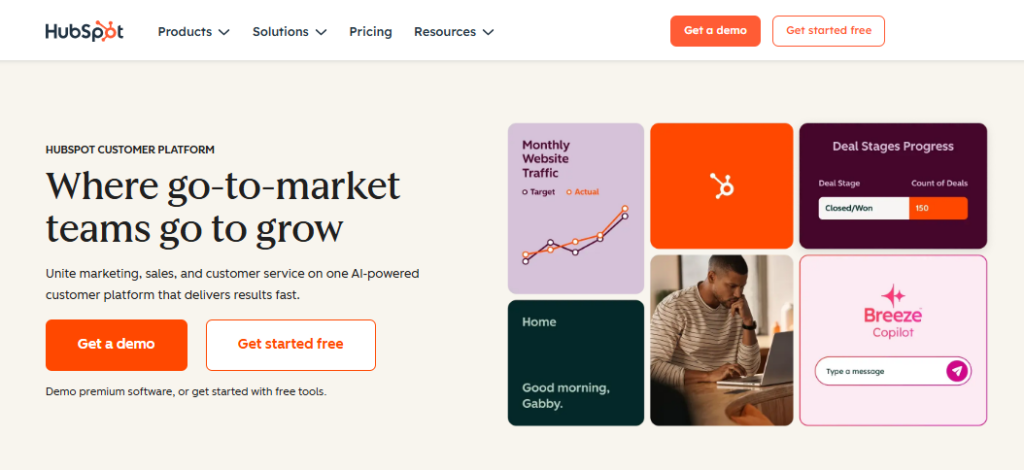
HubSpot’s email marketing tool is a part of its broader CRM and marketing automation platform, meaning you get more than just email marketing capabilities—HubSpot provides a full-fledged marketing and sales solution.
Hubspot Latest Features in 2025:
HubSpot’s 2025 updates have heavily leaned into artificial intelligence and enterprise-level functionality. A standout addition is the introduction of AI-powered agents designed to streamline tasks across marketing, sales, and support.
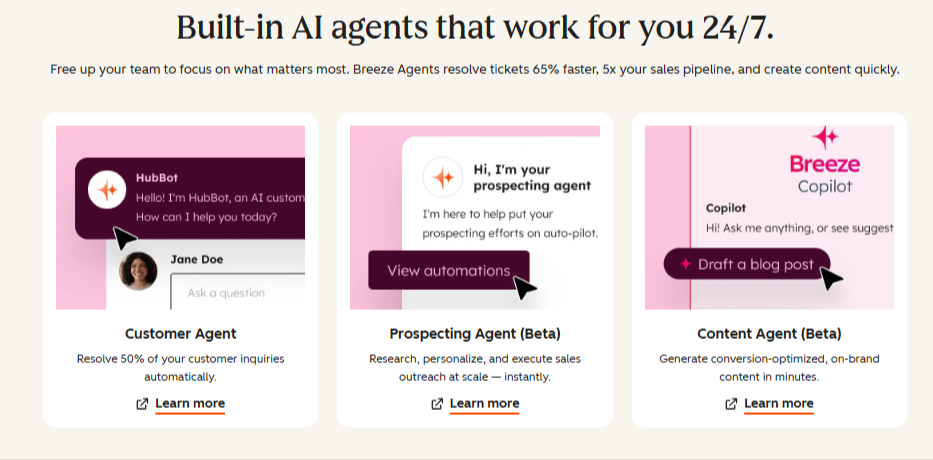
The Marketing Hub Enterprise has also seen significant upgrades, including lookalike lists to find new audiences similar to your best customers and more sophisticated journey automation capabilities.
For businesses managing multiple brands, the new multi-account management feature is a significant boon, allowing for asset sharing and centralized data control.
Mailchimp Overview
Mailchimp is one of the most widely used email marketing platforms worldwide. It started as an email service provider but has since evolved into a more comprehensive marketing automation platform.
Mailchimp offers tools for email campaigns, audience management, landing pages, automation, and analytics.
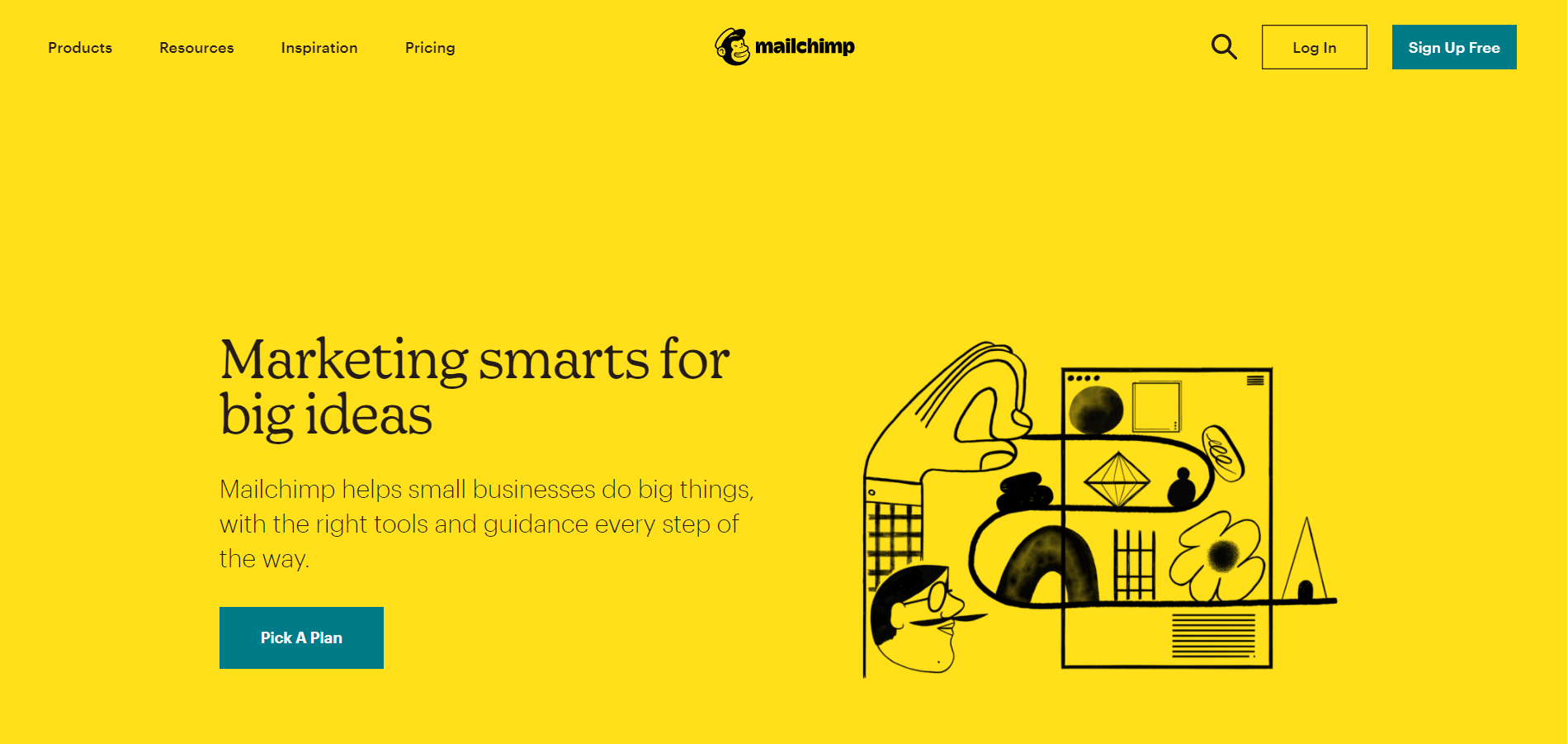
Mailchimp is widely popular for its ease of use and versatility, making it a great choice for businesses of all sizes—from startups to enterprises.
Mailchimp’s Latest Features in 2025:
Mailchimp’s recent updates focus on enhancing the user experience and expanding its marketing channels.
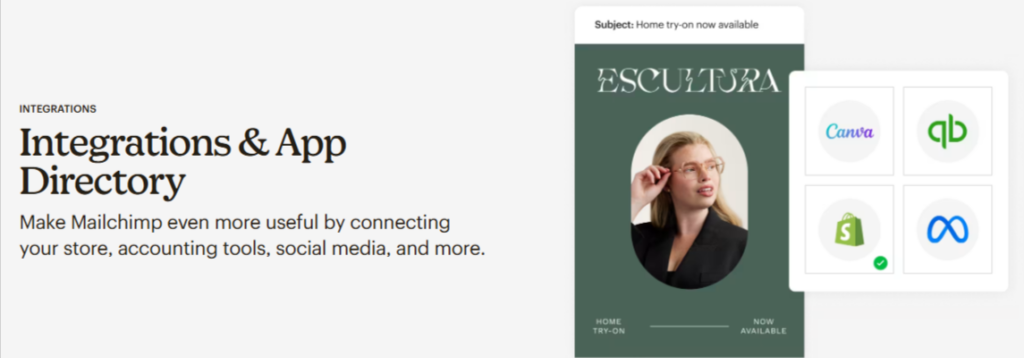
A key development is the introduction of new social media integrations, allowing users to connect with their audience on platforms like TikTok, Snapchat, and Google Leads.
For email design, Mailchimp has introduced advanced control over columns in the mobile view, a much-requested feature for creating responsive emails.
The platform has also integrated Shutterstock images, providing users with a vast library of stock photos. For businesses leveraging SMS marketing, Mailchimp now offers A/B testing for SMS campaigns.
Moosend Overview
Moosend is a marketing automation platform primarily known for its email marketing capabilities. It offers a range of features like automation workflows, advanced reporting, and segmentation.
Moosend is a more affordable option when compared to HubSpot and Mailchimp, making it ideal for smaller businesses looking to implement email marketing without breaking the bank.
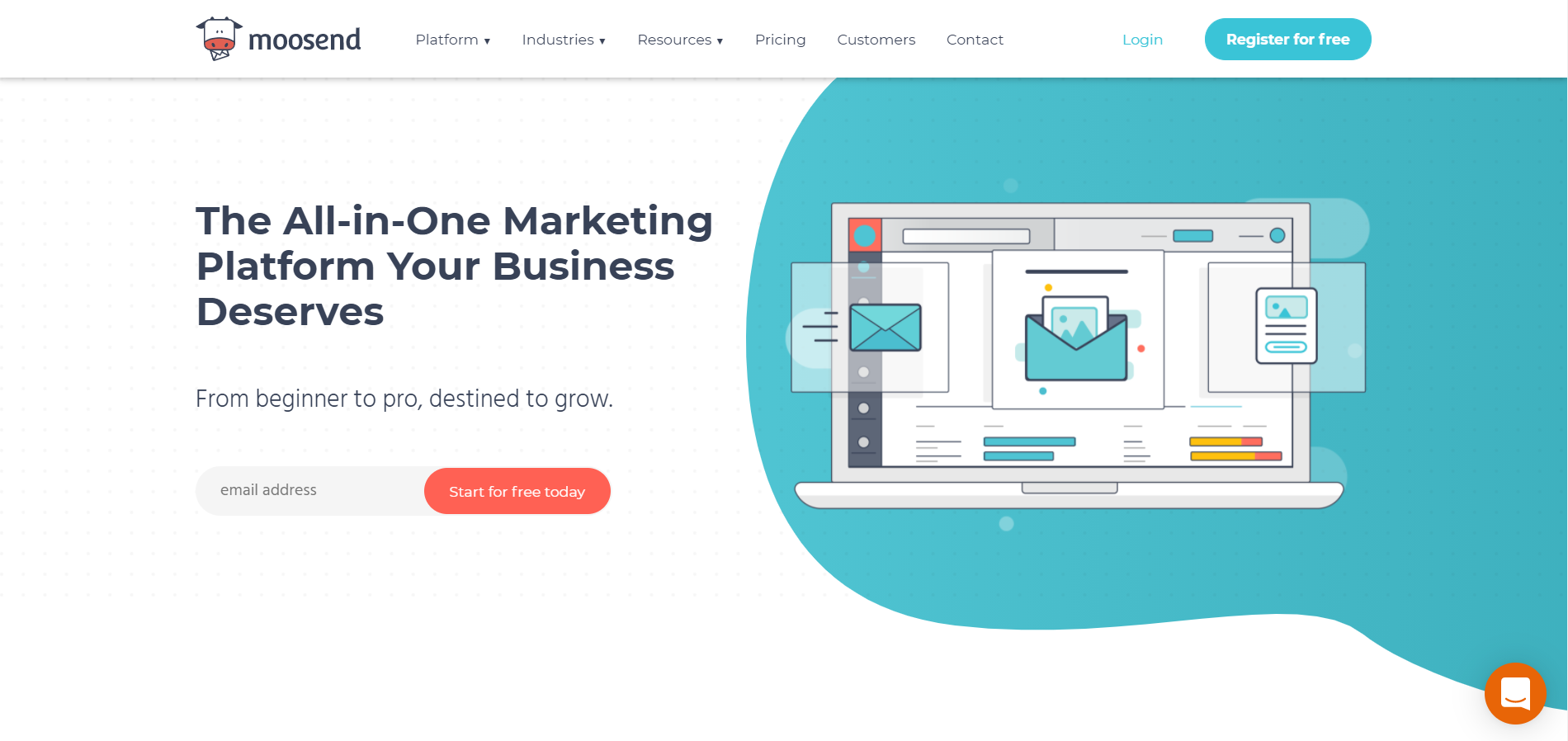
Moosend prides itself on its user-friendly interface and simplicity, which makes it an appealing choice for businesses that need powerful features but don’t want to deal with the complexity of larger platforms.
Moosend’s Latest Features in 2025:
Moosend’s latest updates demonstrate a commitment to enhancing its automation and personalization capabilities. They have introduced new automation triggers, such as for bounced emails, allowing for more sophisticated list management.

The platform has also incorporated AI-driven text suggestions to help users craft more effective subject lines and email copy.
In the email editor, users now have more design flexibility with width adjustments for slots within containers.
A new preference center has also been added, giving subscribers more control over the types of communications they receive.
Key Features Comparison
Let’s take a detailed look at the core features of each platform, which will help us understand their strengths and weaknesses in email marketing.
1. Email Campaign Creation and Templates
HubSpot
HubSpot’s email builder is highly intuitive, offering a drag-and-drop editor for creating visually appealing and responsive emails.
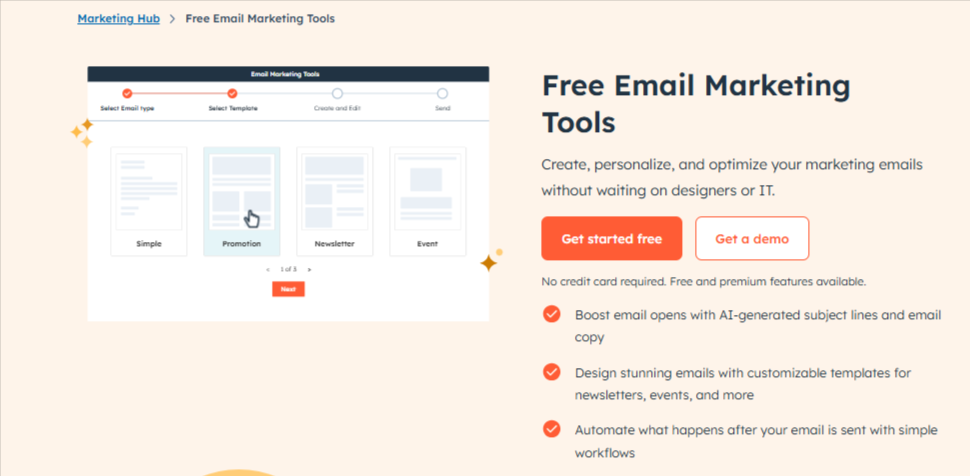
It includes a variety of professionally designed email templates that are customizable for different types of campaigns. HubSpot also allows you to test your emails across various devices to ensure they render correctly.
Mailchimp
Mailchimp is also known for its highly customizable email builder. With a wide selection of templates and the drag-and-drop editor, users can easily create personalized emails.
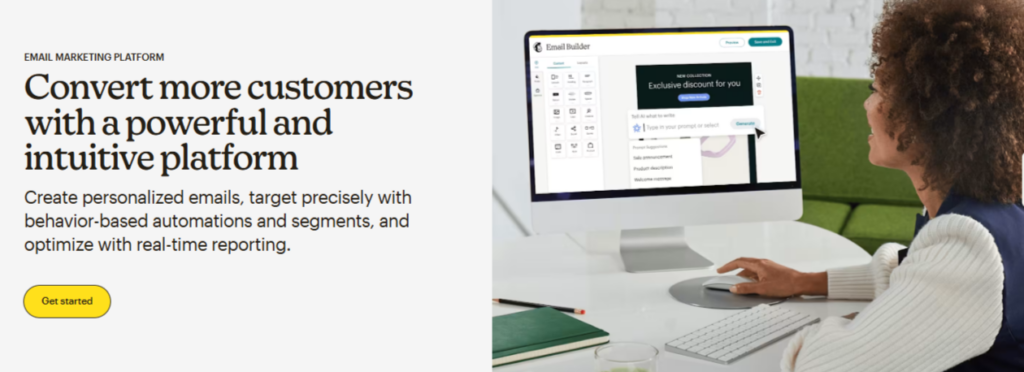
Mailchimp also offers more advanced features like content personalization, which enables you to insert content based on user data dynamically.
Moosend
Moosend provides a robust drag-and-drop email builder, with a large library of pre-designed templates.
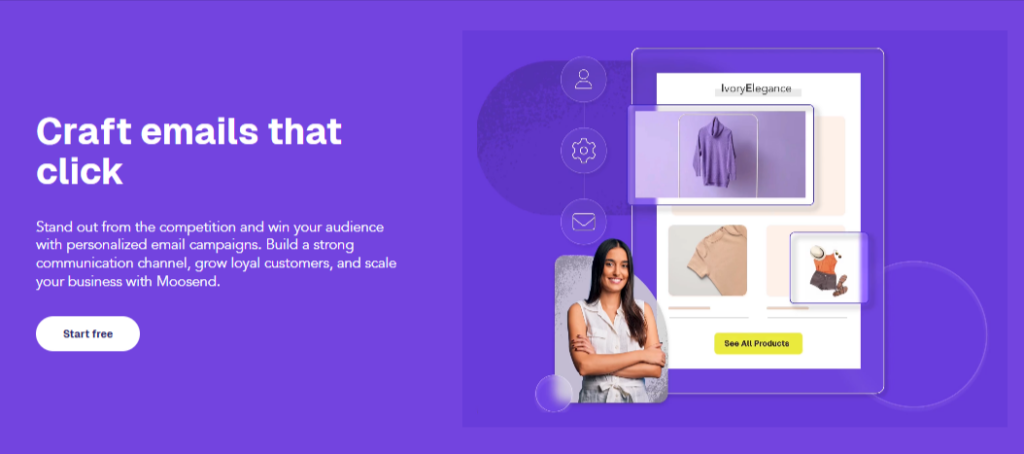
While its templates are responsive and easy to use, they may not be as varied or polished as those of HubSpot or Mailchimp. Nevertheless, it offers a flexible system that allows for deep customization.
Winner: HubSpot. While Mailchimp and Moosend provide solid email creation tools, HubSpot’s interface and variety of templates provide the most flexibility and ease of use.
2. Automation
HubSpot
HubSpot is known for its powerful marketing automation features. Beyond simple email automation, HubSpot offers workflow automation for emails, social media posts, lead nurturing, and more.

The platform allows you to set up advanced triggers and workflows based on user behavior, making it ideal for businesses looking to implement comprehensive automation strategies.
Mailchimp
Mailchimp’s automation features are fairly advanced, offering tools like email sequences, automated campaigns triggered by user actions (such as cart abandonment or form submissions), and A/B testing.

It is a great option for businesses looking to engage users based on behavior, but it may lack the full range of features that HubSpot provides.
Moosend
Moosend offers an excellent set of automation tools, including simple automation workflows, A/B testing, and triggers based on user actions.
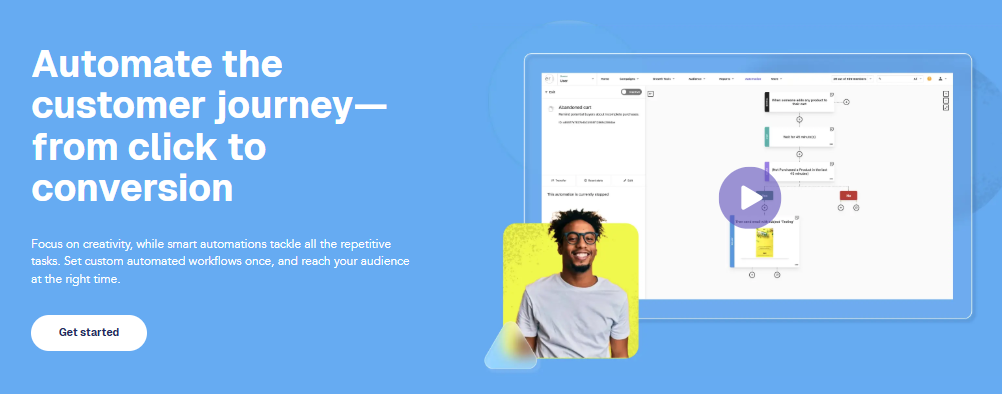
While Moosend’s automation features are quite advanced, they may not be as extensive or customizable as HubSpot’s, but they are user-friendly and highly functional.
Winner: HubSpot. While Mailchimp and Moosend offer strong automation capabilities, HubSpot’s workflows and integrations provide more advanced functionality.
3. Customer Segmentation
HubSpot
HubSpot offers robust segmentation tools that allow users to create highly specific lists based on user behavior, demographics, and CRM data.
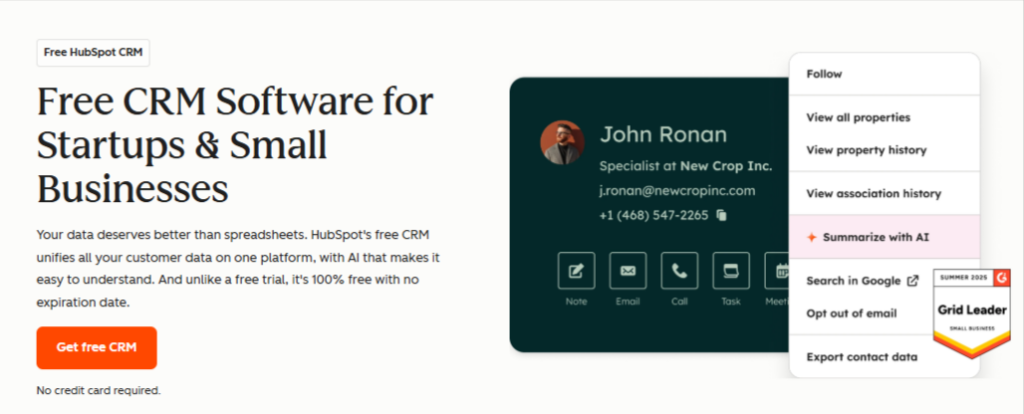
With HubSpot’s CRM, you can easily segment your audience and target them with personalized email campaigns.
Mailchimp
Mailchimp allows for audience segmentation based on numerous factors, such as activity, location, and preferences.
It also supports advanced segmentation for targeting users with specific behaviors, but it can get complicated for users who aren’t familiar with its segmentation features.
Moosend
Moosend offers powerful segmentation capabilities, enabling users to create segments based on behavior, location, and engagement.
It supports dynamic content that changes based on user data, allowing businesses to send more relevant emails.
Winner: HubSpot. While all three platforms have strong segmentation features, HubSpot’s integration with CRM data allows for a more in-depth and dynamic approach.
4. Analytics and Reporting
HubSpot
HubSpot provides comprehensive reporting and analytics that allow you to track the performance of your email campaigns, sales pipelines, and marketing activities.
With detailed reports, businesses can analyze metrics like open rates, click-through rates, bounce rates, and more. The real-time data allows users to make quick decisions on campaign optimization.
Mailchimp
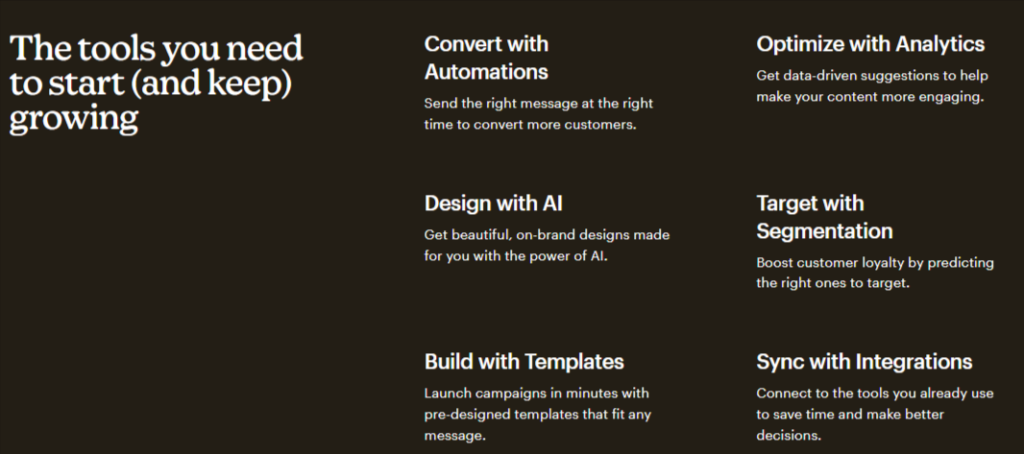
Mailchimp also provides robust analytics tools that offer insights into campaign performance.
You can track key metrics such as open rates, click rates, and subscriber growth, as well as get detailed reports on A/B test results. Mailchimp’s reporting tools are fairly intuitive and easy to navigate.
Moosend
Moosend’s analytics is simple yet powerful. It offers detailed reports on email performance, subscriber activity, and engagement.
Moosend’s reporting tools may not be as comprehensive as those of HubSpot or Mailchimp, but they provide enough data to help businesses optimize their email marketing campaigns.
Winner: HubSpot. While Mailchimp and Moosend offer solid reporting, HubSpot’s detailed and customizable reporting features stand out for businesses that need deeper insights.
5. Integrations
HubSpot
HubSpot boasts an extensive library of integrations with other marketing tools, CRMs, and social media platforms. It seamlessly integrates with Google Analytics, Salesforce, Zapier, and many others.
These integrations allow businesses to easily sync their data across different platforms and streamline their workflows.
Mailchimp
Mailchimp also offers a wide range of integrations, including Shopify, WordPress, Zapier, Salesforce, and more. Mailchimp’s integrations are relatively easy to set up, and the platform supports integrations with over 250 apps.
Moosend
Moosend offers integrations with key platforms like Shopify, WordPress, Zapier, and Google Analytics. While it may not have as many integrations as HubSpot or Mailchimp, it covers all the essential tools needed for small to mid-sized businesses.
Winner: HubSpot. HubSpot’s extensive integration capabilities make it a better choice for businesses that require seamless integration across various marketing and sales tools.
6. Customer Support
HubSpot
HubSpot provides excellent customer support, with a range of options including email, live chat, phone support, and a vast knowledge base.
HubSpot’s support team is known for its responsiveness and expertise, and they offer onboarding services for new customers.
Mailchimp
Mailchimp’s customer support includes email support, live chat (for paid plans), and a comprehensive knowledge base.
While Mailchimp’s support is generally good, it doesn’t offer phone support unless you’re on a higher-tier plan.
Moosend
Moosend provides email and live chat support, and its team is generally responsive. Although its support is good, it might not be as fast or as comprehensive as HubSpot’s.
Winner: HubSpot. HubSpot’s customer support stands out in terms of availability and quality.
Pricing Comparison
Pricing is one of the most important considerations when choosing an email marketing platform, especially for businesses on a budget.
HubSpot
HubSpot’s pricing is on the higher end compared to Mailchimp and Moosend, but the extensive suite of tools and features justifies it. HubSpot offers a free plan, but its advanced features, including marketing automation and CRM tools, come with the paid plans, which start at $50 per month.
Mailchimp
Mailchimp has a free plan for up to 500 subscribers and 1,000 monthly emails, making it an attractive option for small businesses. Paid plans start at $13 per month and go up to $350+ for advanced features like automation, segmentation, and advanced reporting.
Moosend
Moosend offers a more affordable pricing structure, with a free plan for up to 1,000 subscribers and unlimited emails. Paid plans start at $9 per month, making it a great choice for smaller businesses or those with tighter budgets.
Winner: Moosend. Moosend offers the most affordable pricing, especially for smaller businesses, while HubSpot and Mailchimp are more suitable for larger enterprises or those needing advanced features.
Pricing Comparison
Pricing is one of the most important considerations when choosing an email marketing platform, especially for businesses on a budget.
HubSpot
HubSpot’s pricing is on the higher end compared to Mailchimp and Moosend, but it’s justified by the extensive suite of tools and features.
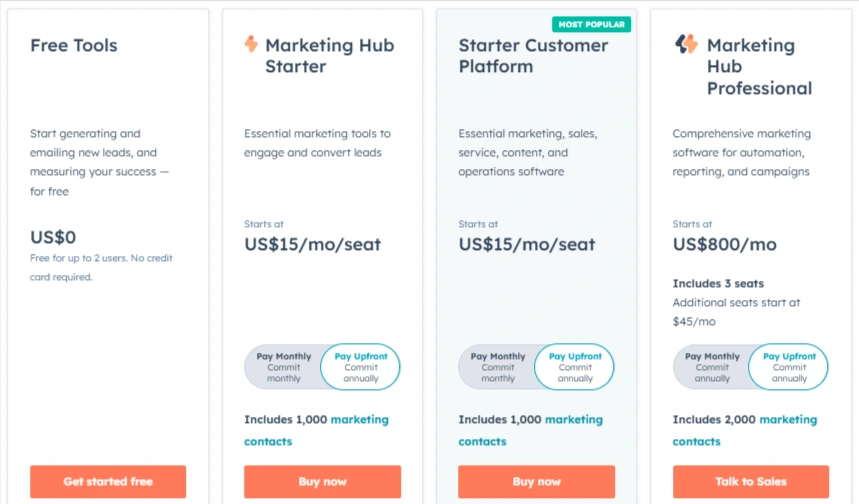
HubSpot offers a free plan, but its advanced features, including marketing automation and CRM tools, come with the paid plans, which start at $15 per month.
Mailchimp
Mailchimp has a free plan for up to 500 subscribers and 1,000 monthly emails, making it an attractive option for small businesses.
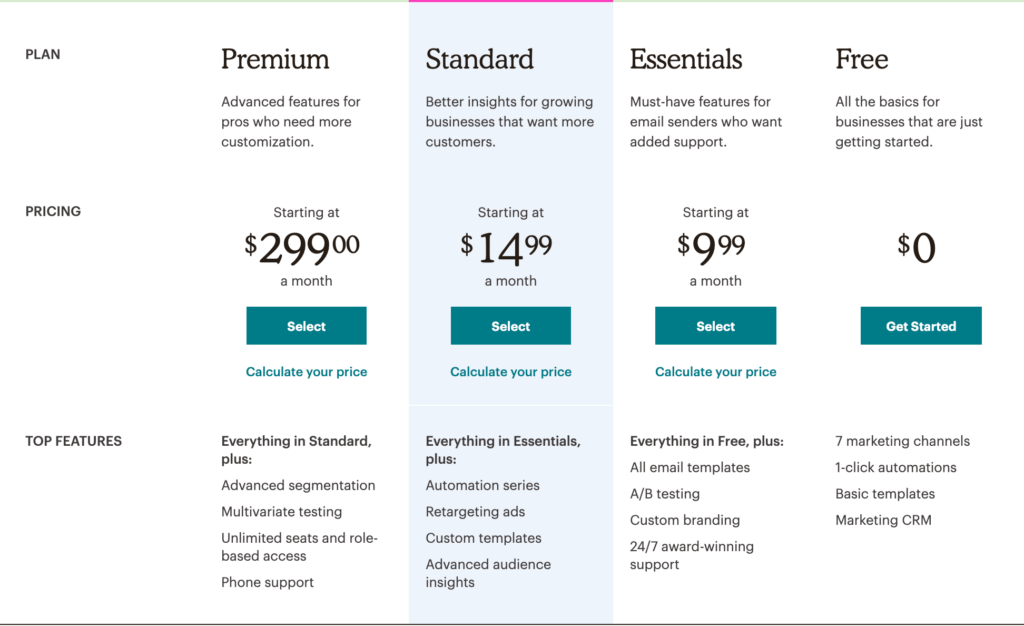
Paid plans start at $9.99 per month and go up to $299 per month for advanced features like automation, segmentation, and advanced reporting.
Moosend
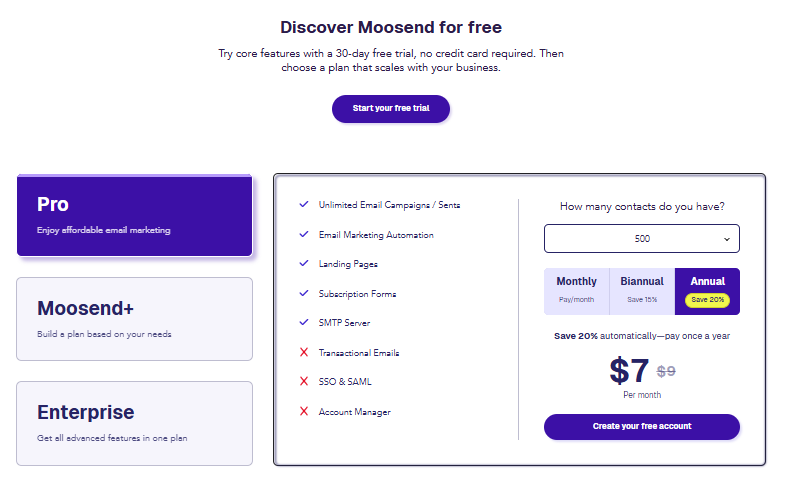
Moosend offers a more affordable pricing structure, with a free plan for up to 1,000 subscribers and unlimited emails. Paid plans start at $7 per month, making it a great choice for smaller businesses or those with tighter budgets.
Winner: Moosend. Moosend offers the most affordable pricing, especially for smaller businesses, while HubSpot and Mailchimp are more suitable for larger enterprises or those needing advanced features.
Pros & Cons: Hubspot vs Mailchimp vs Moosend
Hubspot
Pros
- Free plan offers tons of value for starters.
- Scales smoothly as your business grows bigger.
- Easy setup gets you going really quick.
- Support team helps fast with any issue.
- Trusted by many for reliable results always.
Cons
- Paid plans can cost a lot monthly.
- Takes time to learn all the tools.
Mailchimp
Pros
- Affordable pricing fits small budgets just fine.
- Simple to start using right away easily.
- Grows with you without breaking the bank.
- Great support keeps you on track always.
- Popular choice with lots of happy users.
Cons
- Free plan limits how much you do.
- Advanced stuff needs extra paid add-ons.
Moosend
Pros
- Cheap plans save money for small teams.
- Quick setup makes it super easy to use.
- Flexible options suit all kinds of needs.
- Fast support answers questions in no time.
- Boosts campaigns with simple, effective tools.
Cons
- Fewer integrations than some bigger platforms offer.
- Free plan restricts features too much sometimes.
FAQs on Hubspot vs Mailchimp vs Moosend
What’s the main difference between them?
HubSpot’s all-in-one marketing. Mailchimp’s email-focused. Moosend’s affordable automation.
Which one’s cheapest to start with?
Moosend’s free for 1,000 contacts. Mailchimp’s free too. HubSpot’s pricier.
Can they all send emails easily?
Yes, all have simple email builders. Moosend’s the fastest.
Which is best for beginners?
Mailchimp’s super easy. Moosend’s close. HubSpot needs learning.
Do they track my customers?
HubSpot’s CRM rocks. Mailchimp’s basic. Moosend tracks well.
Which grows with my business?
HubSpot scales big. Mailchimp’s decent. Moosend fits small.
Quick Links:
- Keap vs Hubspot
- HubSpot Black Friday Deals
- SharpSpring vs Hubspot
- Engagebay vs HubSpot
- Wishpond vs Hubspot
- Ontraport VS Hubspot
Conclusion: Hubspot vs Mailchimp vs Moosend 2025
When comparing HubSpot, Mailchimp, and Moosend, each platform offers unique strengths that cater to different business needs:
- HubSpot is the ideal choice for businesses that need a comprehensive marketing and sales solution, with advanced automation, segmentation, and reporting capabilities. It’s best suited for companies that can afford its higher pricing.
- Mailchimp strikes a balance between ease of use and advanced functionality, making it perfect for businesses of all sizes, from startups to enterprises. Its flexibility in pricing and features makes it a go-to option for many marketers.
- Moosend offers powerful features at an affordable price, making it an excellent choice for small to medium-sized businesses that prioritize simplicity and budget.
Ultimately, the best platform depends on your business size, budget, and specific needs in email marketing and automation. Choose wisely to ensure that your email campaigns are as effective as possible in driving growth and engagement!
.
